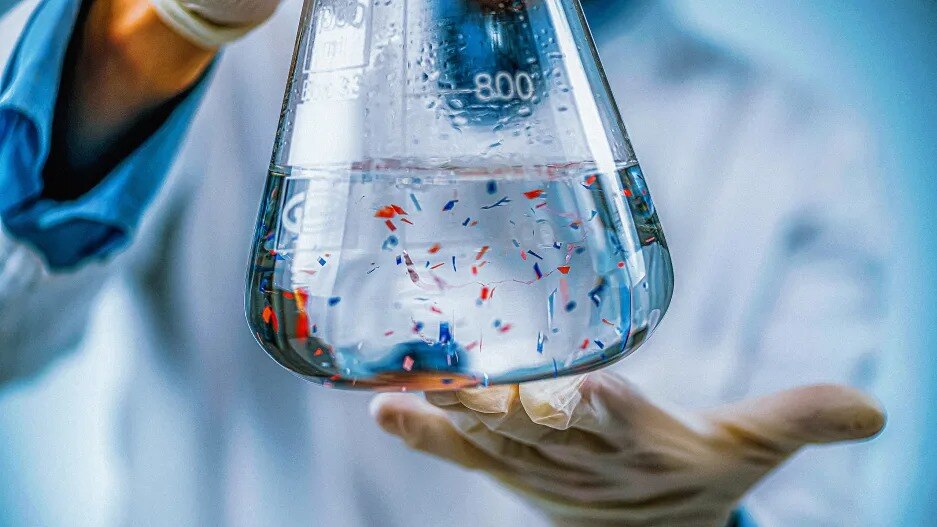- | 4:00 pm
Worried about microplastics in your water? You can get rid of them with common kitchen items
New research found that boiling and filtering tap water can remove many of the microplastics from your water.

The world’s growing microplastics problem can feel overwhelming. As their name would suggest, these specks of plastic are tiny, with some measuring as small as one-thousandth of a millimeter in diameter. Their microscopic size makes them sneaky, allowing them to weasel their way into everything from fish to fruits to table salt, and even drinking water.
Inevitably, they’re also inside the human body. In 2022, researchers detected microplastics in human blood for the first time. Earlier this month, scientists said they’d tested tissue from 62 human placentas and found microplastics in every single one. We don’t yet know what microplastics mean for human health, but as one ecotoxicology expert told National Geographic last year: “We should be concerned. Plastics should not be in your blood.”
New research published in the journal, Environmental Science & Technology Letters, offers some potentially good news in the fight against these insidious petrochemical particles. It suggests that boiling and filtering tap water can remove many of the microplastics, making the water cleaner and safer to drink.
For the study, Zhanjun Li, a professor at Guangzhou Medical University, and Eddy Y. Zeng, a professor at Jinan University, gathered samples of tap water from Guangzhou, China, a city northwest of Hong Kong, and “spiked” it with different levels of microplastics including those derived from polystyrene (which is like styrofoam), polyethylene (the most commonly produced plastic for consumer use), and polypropylene (the second most-used plastic).
Once they had their microplastic water concoctions, they boiled them for 5 minutes, and left them to cool for 10 minutes before running them through a nylon filter. Then the researchers checked how much of the microplastic material remained.
Their results showed that the boiling process had caused the calcium in the water to harden into limescale, which is to be expected. But what’s surprising is that the microplastics became trapped inside the limescale, which meant they were attached to something bigger that could be caught in a filter and removed from the water. The effect was particularly striking in hard water, which contains a lot more calcium than soft water, and saw a microplastics reduction of up to 90%. For soft water, the results were lower, at 25%. You don’t need a fancy research-grade piece of nylon to make this work—a simple coffee filter will do.
The researchers say they hope the study opens the door to more investigation. In other words, they’re not proposing this as the answer to our microplastics problem. Ideally, drinking water would be made clean and pure before it came out of the tap—but perhaps this research can help make that possible.






































